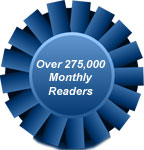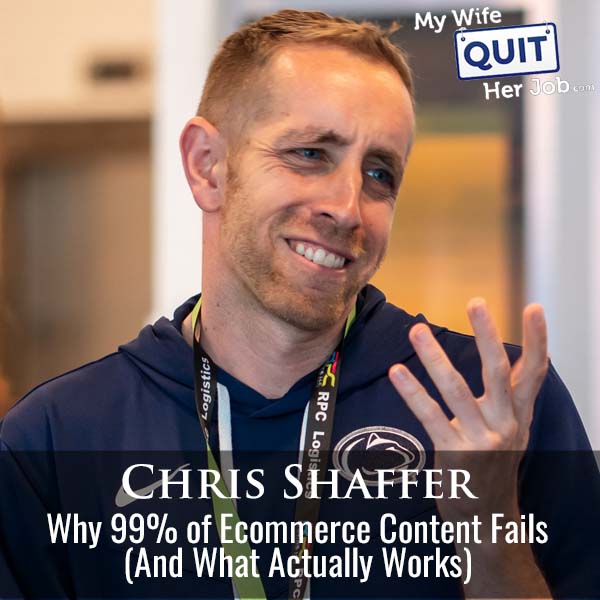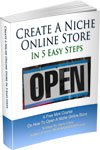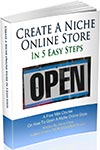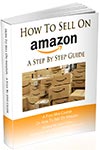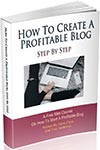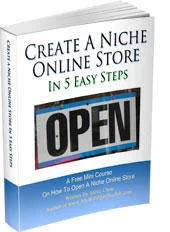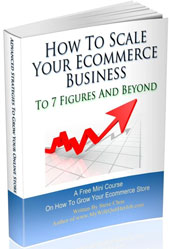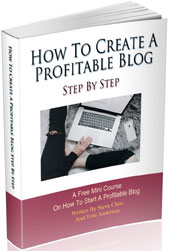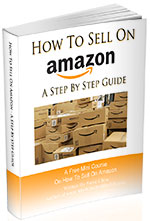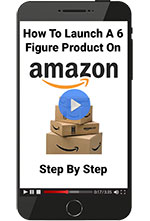Podcast: Download (Duration: 58:44 — 67.6MB)
In this episode, I’m joined by Chris Shaffer, a long-time friend of the show. Chris is someone who always brings a fresh, no-fluff perspective on what’s working right now and he’s known for getting his hands dirty, testing strategies himself, and sharing insights from the trenches.
Today, we’re tackling a hard truth: 99 percent of ecommerce content fails to drive sales or even get noticed. Chris breaks down why most brands get content wrong, the mistakes that are costing them growth, and the exact strategies that are working in 2025.
Get My Free Mini Course On How To Start A Successful Ecommerce Store
If you are interested in starting an ecommerce business, I put together a comprehensive package of resources that will help you launch your own online store from complete scratch. Be sure to grab it before you leave!
What You’ll Learn
- Why Most Ecommerce Content Falls Flat
- What Really Hooks Shoppers
- Simple Secrets To Content That Work
Sponsors
SellersSummit.com – The Sellers Summit is the ecommerce conference that I’ve run for the past 8 years. It’s small and intimate and you’ll learn a ton! Click Here To Grab The Recordings.
The Family First Entrepreneur – Purchase my Wall Street Journal Bestselling book and receive $690 in free bonuses! Click here to redeem the bonuses
Transcript
Welcome back to the podcast, the show where I cover all the latest strategies and current events related to e-commerce and online business. In this episode, I am joined by Chris Schaeffer, a longtime friend of the show who always brings a fresh, no fluff perspective on what is working right now. Chris is known for getting his hands dirty, testing strategies himself and sharing insights from the trenches. With AI, TikTok shop and social media reshaping the game, we are breaking down exactly how to build a content strategy that drives growth in 2025 and beyond.
00:30
But before we begin, want to let you know that tickets for Seller Summit 2026 are now on sale over at sellersummit.com. And if you sell physical products online, this is the event that you should be at. Unlike most conferences that are filled with high level fluff and inspirational stories, Seller Summit is all about tactical, step-by-step strategies you can actually use in your business right away. Every speaker I invite is deep in the trenches, people who are running their own e-commerce stores, managing inventory, dealing with suppliers, and scaling real businesses.
00:59
no corporate execs, and no consultants. Also, I hate big events, so I intentionally keep it small and intimate. We cap attendance at around 200 people, so you can actually have real conversations and connect with everyone in the room. We have sold out every single year for the past nine years, and I expect this year to be no different. It’s happening April 21st to 23rd in Fort Lauderdale, Florida, and if you’re doing over 250K or $1 million in revenue, we also offer a private mastermind for higher level sellers.
01:28
Right now, tickets are the cheapest they’re ever gonna be. So if you want in, go over to sellersummit.com and grab your ticket. Once again, that’s sellersummit.com. Now onto the show.
01:44
Welcome to the My Wife, Good or Jot podcast. Today I am thrilled to have Chris Schaeffer back on the show. Chris is someone who I’ve known for almost a decade now. He’s helped run the Seller Summit for as long as I can remember, I think the first year. He just spoke at the 2025 Seller Summit a couple months ago. And if you don’t know Chris, I he’s actually been on the podcast a couple of times. He consults for dozens of companies. He’s got a bunch of his own brands as well. And what I always like about him,
02:13
is that he’s opinionated and he brings his own unique perspective on what’s working in e-commerce. He’s also the type of guy that gets his hands dirty. He actually does the real work. And right now in the midst of AI, TikTok, shop, social media, content I would say is pretty much becoming a requirement to run an e-commerce business. in this episode, we’re gonna talk about how to formulate a content strategy for your brand. What’s going on, Chris?
02:43
You give me all these compliments, you bring me on the show, and then you’re like, yeah, he gets his hands dirty. Are there people who don’t actually do this stuff? Well, I’m thinking about your old buddy Scott. I always felt like you did all the work, and he was the hype man. That’s not true. does a heck of a lot. But I happen to have done a lot more on the e-commerce side of stuff, which is why we’re here.
03:12
Yes. That’s why we’re having and I making fun of Scott. No, no shade to Scott. I know he does a lot of work, but you know, when you guys were together, it’s much more fun to pick on him. Uh, especially when he’s not here. Anytime you can get that chest. If you guys don’t know who Scott is, he’s talking about Scott Volcker, who was the original host of the amazing seller podcast, which was the most popular Amazon podcast on the planet at the time. Yeah. You know, I, know you and Scott recently stopped brand creators. How are you spending your time now?
03:41
that you’re not spending all that time creating content for that business? The thing that I’m very confused about is how I should have more time and somehow have less. I managed to fill that time with a whole bunch of new clients and a whole bunch of other things to do. uh So I’m doing a lot more client work than I was even last year, which is great. um But yeah, I mean, it’s just…
04:10
problem solving, right? That’s realistically how I get hauled into things. I think you and I talked about this a little bit at Seller Summit. We have a client that we’ve had since 2015. We started with them just doing Amazon consulting because I heard the owner on a podcast went to buy the product on Amazon, saw that it wasn’t there and wrote an email and was like, hey, you should probably sell your stuff on Amazon because that’s where I went to look for it. And I got an email back five minutes later that was like, hey, do you know how to do that? And that has turned into now a
04:39
uh Ten year long contract where I’m running essentially everything for the business with the help of AI and a little bit of human content creation So but you’re not an employee, right? You’re a consultant and an owner now and an owner right part owner, right? Right. Right. Wait, how do you get your clients? I’ve always wondered is it just word of mouth or For the most part, I mean Way back in the day. We did some outreach like 2013 2014
05:08
But a lot of it since then has come from doing some work for somebody and then leveling up inside of that contract. And I think one of the things that we did, if you’re looking at this from an agency perspective or you wanna do some consulting, and I know Alex Hermosy talks about this all the time, create an offer that’s irresistible, right? The irresistible offer, an offer they can’t say no to. The way we did that on the consulting side was by using commission or above board.
05:34
So when we initially brought in a lot of our clients, instead of charging a monthly retainer, we would charge a commission on the additional sales that we brought in. Whether that was additional revenue through email marketing, additional revenue through content creation, or launching a new channel for somebody like taking them over to Amazon and say, all right, what we’re gonna do is we’re gonna take the total amount of money that we make somewhere like Amazon, we’re gonna subtract your product costs, and then we take a percentage of the profit of that. No one says no to that.
06:03
Because if you don’t do anything, it’s not a problem. Yeah. And it a lot of pressure on you. Yeah. Which I like. And then that over time turned into, Hey, what do you know about like email marketing? What do you know about content creation? What do you know about running ads? And with a lot of that kind of stuff, once you have that trust built and you’re like, Hey, here’s, here’s what we’re going to do on a monthly basis. We can either do it the way that we did before, or we can do it as a flat monthly contract. And what we’ve found is.
06:33
most people at that point will go to the monthly contract because they realize how much they’re paying you on commission. So we were able to kind of really ramp those numbers up, especially with something like Amazon. If you go from zero to a half a million dollars in the first year, which we did for that client, 10, 15 % of that starts to add up. So you go, hey, let’s just make this eight grand a month and we’ll lump everything in. It becomes a lot more appealing of an offer. Right, but not in the beginning. In the beginning when you had to prove yourself.
07:02
Performance is what matters. Okay. Yeah, I like that model. I like that model So I know you work with a number of brands. It sounds like you’ve expanded your client pool With given what’s everything that’s going on with AI? uh Zero click, know less clicks to your website. Where are you advising them to focus their efforts on the marketing end? Are you having them do video written content tick-tock IG? I know you’re gonna say it depends
07:29
So let’s pick an example and build a strategy around it for the audience. It depends. ah No, I think if you guys are listening to this, I have a giant sign mounted on the wall behind me. That’s as it depends. uh It doesn’t really depend because if people are selling and most of the people that listen to your podcast are in the e-commerce world or want to get into the e-commerce world, there’s really two or three places to focus on.
07:59
Written content for the longest time was the starting point. But with how terrible Google is these days, like quite frankly, Google is kind of a shit show. um I don’t know that I would start there. It is something you still want to have as part of the content mix. And I actually spent the last week building a fully automated content flow for somebody. So all they have to do is type in a keyword and it generates blog posts and the images and all of the stuff in their brand voice.
08:29
because that’s so easy to do now, content, written content specifically has become kind of a diamond dozen. It’s still something that you should mix in, but focusing, I think on the video side is going to be the last bastion for that. And I’m a fan of longer form video, at least to start with, because we can chop it down into other things. If you shoot a 60 second TikTok, you can’t really use that for other stuff.
08:58
Steve, you know this, but YouTube is the second largest search engine in the world behind Google itself, right? And so focusing somewhere like YouTube and then figuring out how to repurpose that content other places where you don’t get as much long-term value out of it, I think probably makes the most sense for people. The reason that I like YouTube is at least as of recording this podcast, it’s still evergreen, right? So I know you have a YouTube channel. uh
09:26
If you look at your views in any given month, unless you have some sort of a freak video takeoff on something, you’re gonna have a huge chunk of your views for that month from your catalog of content. And people will watch the content that you put out all year round and far into the future. And if you actually look at when stuff is published in your YouTube feed, a lot of times when you refresh that homepage on YouTube, you’ll see two, three, four, five year old videos pop up because it’s something that YouTube thinks you are interested in.
09:55
even though it’s older content. You don’t really get that anywhere else. You don’t get that on Instagram, right? You post something on Instagram. If it doesn’t go viral right away, no one will ever see it again, except for the one weird person who looks at every single post that you put up on Instagram. TikTok is a little more like Instagram than it is like YouTube, but it seems to be changing a little bit. I know you’ve played around with TikTok a little bit. What is your experience with kind of the back catalog on TikTok? Yeah, I’m back all in on TikTok.
10:24
I would say a video can last a couple weeks, maybe a month if it’s like really good, but then it drops off. And you’re right, YouTube is just like the good old Google search days, right? You do something once, you get traffic forever, that’s what I love about it. And that’s why I view my YouTube channel as a stock that can only rise. Every video that I add to it will increase the traffic over time.
10:52
but it’s not true for like TikTok and Instagram in general. Yeah, and I think that’s one of the biggest things that people miss out on is they’re creating content in the wrong places. And we’ve heard since 2008 that we need to be on social media. You have to be on Instagram, right? If you listen to somebody like Gary V, he’s like, post a hundred times a day on Instagram, right? Terrible Gary V impression, but you understand where I’m going with that. And the problem with that for most e-commerce businesses,
11:21
is they don’t have a dedicated content team. So even if you’re leveraging AI to chop up those things and maybe even to post it, if you’re real fancy, you still have to have content to pull from. And if you’re running a one, two, or even a five person e-commerce businesses, which is probably most people listening to this, you don’t have the time to do that. And I don’t know, also run the business, like find new products, source your products, go back and forth with the manufacturer about when they’re actually going to give you your stuff, deal with customer surveys.
11:51
deal with the website stuff. Like you don’t have time to do all of that. And people get spread really, really thin and try to post on Instagram and Tik Tok and Snapchat threads and all of these different places instead of spending the time, energy and effort one place. And so somebody was to ask me which place they should focus on. It would be, and we don’t have to say, you know, long form content. It doesn’t have to be an hour long, but 10 to 12 minute videos on YouTube tend to lead to the best results.
12:21
Not only can you get more eyeballs faster somewhere like a YouTube, not only do get the evergreen benefit, but you also get to see really quickly what’s working and what’s not. Take the stuff that’s working, chop that up, and then put that somewhere like your Instagram, your TikTok, wherever. All right, so walk me through this because whenever I talk about YouTube to someone who has an e-commerce brand, creating a 10 to 12 minute video sounds very intimidating. So let’s walk through
12:51
creating the ideas for that content and how to make it less intimidating. And I think one of the biggest mistakes that people make is they try to create content about their product instead of thinking about who their product serves, right? The niche, the niche, the nacho, however you wanna classify it. um That I think is the key to understanding and creating good content.
13:21
Right, so if we look at somebody like Black Rifle Coffee, if you go look at their Instagram, you go look at their YouTube, they don’t create coffee content. Who are their customers? Right, it’s really hard to make a 12 minute video about how to French press coffee, because unless you’re sitting there boiling the water for eight of those minutes, it’s really not a 12 minute long process. Black Rifle Coffee does this really well. They don’t create coffee content.
13:47
They create content for first responders. They create content for military people. They create content for their actual audience. So the first thing before we even sit down and get into the content creation stages, we need to take a step back and say, who do we serve? Who is actually using my products? And what are the kinds of things that people would want to see? Right? So we do have to take that step back and first find a niche. And I know the logical question that’s going to come out of this is what’s a niche?
14:16
The definition that I like to use is it’s a group of people who identify as something or say that they love something. So if you were to say, I am a fisherman or I love fishing, that would be a niche. Right. And if you think about your product, you’re not selling a water bottle. mean, literally you are, but if you’re selling water bottles, who is buying them? Are they using it for camping? Okay. Your niche is camping. Are they using it to go on long runs? Maybe your niches runners or people who are doing stuff outside.
14:45
but you need to take the step back and figure that out first. If you can figure that out, it becomes very easy to find those content ideas if you leverage the platform. So something like YouTube is great for this. What’s YouTube’s goal, Steve? Keep you on longer watching videos. Watching Google is the, Google is the only platform who considers it a win. If you don’t go back to Google, I know you’ll be familiar with this term.
15:15
pogo sticking, right? It was something that Google specifically looks at as a metric. What that means is if you click on one of those blue links in Google, you go to that website and then you hit the back button and click on another link, they consider that a loss, right? They consider that something that’s not a good outcome because you had to come back to the platform. Every other platform on the planet, whether we’re talking about YouTube, TikTok, Instagram, Facebook, is designed to keep you on that website as long as possible. How do they do that?
15:43
The word that everybody hates to hear, the algorithm, right? But the algorithm doesn’t need to be a scary thing. And this is something I think once you wrap your head around it, it makes it a lot less scary. So everybody hears the word algorithm, they’re like, oh, the algorithm hates me. Whatever. We need to start replacing that word in our vocabulary with the audience. YouTube’s goal with their algorithm is to be a proxy for your audience.
16:12
If you create content that the people you are trying to serve, whether they’re fishermen or coffee lovers or whatever, are looking for, YouTube will show it to people. And it’s one of the reasons I love YouTube. You can have a four-year-old YouTube video that finally takes off because YouTube found the right audience for it, finally. We can use that algorithm, whether it’s YouTube, Instagram, or TikTok, in our favor. We just have to act like our customers. It’s the reason I’m a huge fan of test accounts.
16:41
And I know this is something I talked about at Seller Summit and it’s one of my favorite tricks for figuring out, finally to answer your question, Steve, how to create the content that our audience is already looking for. We waste a ton of time trying to brainstorm and think about the things that our audience might look for. Why? If we can use something like YouTube to just show us what our audience is already not just looking for, but consuming on that platform, that’ll shortcut that process for us.
17:09
And so if you’re thinking about starting to create some content, my number one recommendation would be to start a test account. Basically create a new Gmail address or a new YouTube account with whatever email that you’d like to use. You go in, you can start with your main keyword, phishing, and just start watching some of the videos that YouTube suggests. If you know some of the big creators in the space, that’s usually a better place to start because
17:37
They’ll know immediately that you know about the niche versus just having a passive interest in bass fishing. But when you watch as few as three to five videos, they start to get an idea for who you are and tailor the algorithm to you. And if you continuously consume the content that peaks your interest in that space, they will show you the exact content that is already performing well. And then all you have to do is figure out how to create your version of that. So obviously we’re not just gonna rip off somebody’s video.
18:07
but we’re gonna sit down, we’re gonna look at the titles that pop up. And you say, okay, that’s a really cool bucket. The 15 fishing lures everybody needs to use. uh How to catch more fish for $5. Whatever the things are that you start to see coming up over and over again, jot down some of those title ideas and then go into the content planning process to say, how would I approach this topic? Because we know that this video is already working. We know that this title and this.
18:34
idea generally is already working to go to our niche, how can we create our own version of it? I’ll have to go watch Black Rifle Coffee’s channel, but are there videos like 10 to 12 minutes? Some of them are, some of them aren’t. Their Instagram is also really interesting because their Instagram is all just like weird, what’s the like meme videos about the military. But the other good example of this
19:04
And it always gets a laugh when I bring it up because it’s the nerds know uh Linus Tech Tips. Are you familiar with Linus Tech Tips on YouTube at all? Steve, you know they’re not a media company anymore, right?
19:20
I just wanted to take a moment to tell you about a free resource that I offer on my website that you may not be aware of. If you are interested in starting your own online store, I put together a comprehensive six day mini course on how to get started in ecommerce that you should all check out. It contains both video and text based tutorials that go over the entire process of finding products to sell all the way to getting your first sales online. Now this course is free and can be attained at mywifequitterjob.com slash free.
19:50
just sign up right there on the front page via email and I’ll send you the course right away. Once again, that’s mywifequitterjob.com slash free. Now back to the show. I think they sell their own stuff and they do a lot of affiliates, right? So in 2020, they made 23 % of their revenue from ads, 13 % from e-commerce, 12 % from sponsored videos, 24 % from in video sponsors.
20:18
and 23 % from affiliates. Last year, 55 % of their revenue came from Ecom. They’re not creating content about screwdrivers, right? They sell a really cool, what’s the word that I’m looking for? The like screwdrivers, like a ratcheting screwdriver. They sell IT guy apparel. They sell a lot of those kinds of things. That’s not the content they’re creating. They’re creating content for the audience. Now they had the benefit of starting.
20:47
as a YouTube channel. And so they knew that’s how they had to create the content. But because that is the audience that they have attracted, they then built the products around it. We can do the same thing in reverse. If you have the products, you just have to figure out the content that people are already consuming and then do that. think if you guys, even if you’re not into Linus Tech Tips or technology at all, go check out the channel. They’ve done six figures, Steve, on a single live stream. And they do just a Friday show and it wasn’t them promoting.
21:17
It wasn’t them doing anything other than what they normally do. They have their show, you know, it’s tech news of the week, whatever. And they say, oh, here’s the special for this week. Go check it out. Right. That’s their pitch. It’s not like, it’s not rocket surgery. They’re not going through a whole giant marketing funnel. They’re like, Hey, if you like our stuff, if you like our content, maybe you’ll like our products too. And because, especially with something like YouTube, you build trust fast. Steve, do you know if I use the word parasocial relationship?
21:47
Does that mean anything to you? It actually doesn’t. does that mean? you have probably had a lot of people come up to you and say, man, I feel like I know you from the podcast. I feel like I know you from the YouTube channel. My favorite experience with that was in 2015 or 2016 with Scott. We were sitting in a restaurant and somebody walked up and said, I know your voice, right? Which is probably not the right way to approach someone, but still sticks in my mind. So I remember who that person is.
22:15
But when you consume content from somebody, you’re consuming content in different areas of your life. So podcasts are a great example of this. You’re listening to podcasts when you’re at the gym, you’re listening to podcasts in your car, maybe you’re listening to podcasts when you’re in the bathroom, right? In those private intimate moments, it’s just you and that other person. The same thing applies with YouTube content, whether you’re sitting there watching it or you’re listening to it. And I actually listen to a lot more YouTube content than I watch.
22:43
because I’ll turn on an hour long video and throw my headphones in and walk to the gym or walk to the store or do whatever I need to do. But because it’s just you and that other person’s voice, you actually build a really deep connection with that person because they’re literally sitting there talking to you for 12 minutes, 20 minutes, an hour at a time. And so above seeing something funny on Instagram, you build that relationship with people very quickly.
23:10
And so then when you recommend something or you say, Hey, go check out my stuff. They have that relationship with you. And instead of you having to build out the giant marketing funnel or do any of the things that we should still do on the back end. All you have to do is say, Hey, go check out our screwdriver or Hey, go check out our coffee or Hey, go check this out. And you will get a huge number of people to do that because they’ve built no like and trust with you through the content that they’ve consumed.
23:37
I think most people listening understand the theory on why it works. You take a channel like Linus Tech Tips, their production value is incredible now. So yeah, if I were to go, I haven’t seen that really videos actually, but if I were to watch it now and say, okay, I want to start a YouTube channel. It’s pretty intimidating. Right? You have a brand and let’s, let’s just call it a water bottles or something like that. It seems like production value is a huge hurdle.
24:07
like in your mind at least. Do you see e-commerce channels where it’s just like a talking head and do well? As long as they’re creating niche based content, yes. And so I think the thing that most people misunderstand is that they think because many channels that do well on YouTube have high production, that you have to have high production to do very well on YouTube.
24:36
That’s not the case, right? You look at somebody like Mr. Beast and you’re like, okay, I need to edit my videos like that. Like I need like 48 people to work on it. And the answer is no. The content is what speaks to people, not the production of the content itself. So I think Scott is actually a good example of this. I don’t know if you’ve checked out any of the content on the channel he’s doing with his son right now. I have not actually, maybe I should. But almost all of their videos are shot with an iPhone and
25:06
the road, or no, it’s the DJI Bluetooth mic. Yeah, the light, I have them right here on my desk actually, these light ones, right? Yeah, that exact set, almost everything that they’ve done is done using that. And in fact, they did a 24 hour content challenge back in August where they wanted to do 52 videos, shot, edited, thumbnails done, so they would have one video a week for the next year.
25:36
in 24 hours. They did every single one of those videos with that setup. And you can’t tell the difference between that and $4,000 camera. So there’s no reason not to get started that way. You can always up the production value later. But what people are really concerned about is the quality of the content. So if you do something like build the research channel to get all of the ideas, then you just go, how do I do this with an iPhone? And
26:03
not have to hire a camera person and 14 editors and build a server in my house, right? You just have to figure out your way to do it. The biggest hurdle for people is normally recording that first video. And I think this is where people make a lot of mistakes. And I love using my fiance as the example of this. She’s probably gonna yell at me because she’s gonna hear me say her name and a whole bunch of mean things. ah But I can always tell when she’s recording a video. Because I’ll hear
26:32
eight and a half minutes of her talking and then a whole bunch of Spanish profanity. Right? Because people get really bogged down in, need to say every word perfectly. I need to be able to not have to do any editing. And if they say um or uh, or they mispronounce a word, instead of just taking a breath and keep on going, they’ll stop and start the video from the beginning.
27:01
Cause they want one nice long take. That’s nice if you can do it, but it’s not mandatory. People like ums and uhs because it’s how real people talk, right? If you mess up a word, just fix it. I’m sure I’ve said something incorrectly or pronounced something incorrectly through the course of the 25 minutes we’ve been talking so far, but I’ve done it enough now that it doesn’t stop me from moving on and messing up a word is not the end of the.
27:30
Right? You just pronounce it correctly or make a joke out of it or do something and then you keep moving. And I think the easiest way to get trained with that is by doing it live. I’m a huge fan of either doing live content or what I call one shot content. So you’re never hitting pause. You’re never hitting stop. You’re never starting over. If you’re too scared to get on alive, that’s fine. Just keep the camera rolling, take a breath and start where you screwed up. If you do it that way,
28:00
you force yourself to create the content, it still comes off naturally. And yeah, you might have to go in and trim out a few sections where you’re just rolling your eyes at the camera or screaming 15 Venezuelan profanities, but you get it done. And the thing that I think stops most people isn’t even the production value, it’s just getting through the first recording of the thing. I would agree with that. uh Tony and I, teach a class on that. it’s almost always psychological for people.
28:31
Are you allowed to talk about your clients? have you helped? Do they have YouTube channels? Do any of your clients have YouTube channels? Yeah, I can’t share any of them publicly, but I can tell you. So we’re in five different spaces on YouTube right now. Okay. One of them is doing it with just a podcast. Oh, the only video content they’re creating is their long form podcast. Some of them are shooting shorter form videos and
29:00
part of my team is about to go out to one of our newer clients to shoot the first few videos. And they’re gonna use exactly that strategy, right? We have the test channel built so we know the ideas that we think will resonate with the audience, because YouTube is telling us, here’s what’s working in that space. ah She’s great on camera anyway, but even if she wasn’t, it’s all right, let’s just do this in one take. Get as much of it out as you can. If you screw up, we’ll stop, we’ll take a second.
29:29
and then just start from where we left off. Steve, do you still script your videos? I do, I do. They’re loosely scripted though. They’re not like word for word. uh Sometimes it’s like the intro can be word for word because that’s the most important part. But the guts of it can be bullet points, sentences. I know you and I have had this conversation a little bit in the past and I thought I remembered that. I’m a huge fan of either no cards or
29:59
literally pen and paper with the bullet pointed outline of what you’re going to talk about. If you’re going to script something, the intro or the hook is usually the place to try to get it word for word, right? So here’s what we’re going to do today uh or you know, whatever the reason is that they’re going to stay to the end of the video. That’s what would be referred to as the hook that you want to think about a little bit. But if you know anything about your niche, you should be able to talk
30:28
pretty well off the cuff about the different fishing lures or the different ways to brew coffee, that as long as you have that bullet pointed out, you can fill in the rest of that. And that’s the other big trap that I see a lot of people make. They will say, okay, I need to get this word for word. And that was something that I noticed with Michelle. She went through, I think, 20 takes of the same video and there was just a word that she could not pronounce. She says it all day every day.
30:56
but every time she got to that word, she screwed up. It’s in the script, so she needs to read it, in her mind. Just put a different word in, right? And when you are sitting there trying to read the script, one, it doesn’t come off as naturally, and two, you’re kind of a prisoner to that exact structure and it feels less natural. So if you can script less and bullet point more, that gives you more authenticity and it also makes you feel less like you’re screwing up.
31:25
Because as long as you’re making your way through the bullet points, someone will understand it. And I don’t know if you feel this way, but one of my rules, uh like if I’m giving uh a talk at a conference, like at Seller Summit, if I hate it, people will generally like it. Like, no one’s gonna understand this, it’s not gonna make any sense, because for the vast majority of people, you know substantially more than your audience about your product and about your niche, right?
31:54
And so the things you think are silly or repetitive or don’t need to be filled in are exactly the kinds of, or the things that you hate talking about are exactly the kinds of things that your audience needs to hear. And so if you get done with a video and you’re like, who would watch this? At least for me, as long as it’s not who would watch this because you’re getting hit on the head by a flying bird or like who would watch this because the camera’s upside down. It’s, I don’t think this serves any value. A lot of times those are the videos that do the best.
32:23
because they appeal to the broadest number of people. It’s things you think because you know a lot about the space that everybody knows. But most people don’t know those things. You know, I think it would really help the audience listening to this. If you could record your wife screwing up and cursing, and then I’ll post it. I think that’d be really helpful for that and your, you know, your relationship. Yeah, I think it would definitely build a lot of know, like, and trust between the two of us.
32:53
I have couple questions for you though. Regarding the brands that have YouTube channels, you mentioned a podcast. That’s actually quite interesting. I never would have thought to create a podcast to promote an e-commerce brand. That sounds pretty easy. All you’re doing is talking about the space. Right? And so if we go back to the Linus Tech Tips example, their Friday live show is their podcast. They just put it out in an audio format afterwards.
33:23
Now, they’ve filled in medium and long form content throughout the week. But as long as you’re speaking to that same audience, anything you do in that space works. And in the case of that client, he is terrible on recorded video, but can talk off the cuff for hours about the niche. And so if you can get him on camera, either by himself or with a guest, and it’s being recorded.
33:52
It comes out really well and it’s very high quality content for the audience. He tried to do some shorter form stuff, you know, less than an hour long and absolutely hated it. Ironically, some of those videos have done much better than any of the podcast episodes because that’s what YouTube tends to favor. But it’s that easy and their entire business was built off of the podcast and YouTube channel that is just the recording of the podcast.
34:18
reason why I’m asking all these questions is because these are all reservations that I had. uh You know, I mentioned this at Sello Summit, hasn’t launched yet, it’s probably gonna launch either end of this month or next month, but a Bumblebee Linens YouTube channel. And for me at least, it’s all low energy, right? Like if I have to go on set, film, know, uh move around or whatever, it’s probably not gonna happen. And that’s just me and my mental hurdles and the production quality. uh people listening,
34:48
I’m starting to tell the we sell wedding handkerchiefs, right? And there’s always a story behind the handkerchief how these couples got together and that sort of thing and all I’m doing is just telling those stories and I’m telling them by AI generating, you know cartoon likenesses of them and I’m usually changing their names unless they give me permission to use their names these first couple they want to remain anonymous and whatnot and That’s gonna be it telling stories because everyone loves a good story. But the way I’m doing it is
35:18
Like I’m literally just behind a green screen talking, because I can do that in my office. And then I can generate the images to generate the scenery behind the story, because I can’t get all those photos from a customer, right? At best, I could probably just get a photo of the couple together. And that’s how I just kind of rationalized the ability to maintain this forever. Do your clients have these same reservations? Like I can’t be the only one.
35:45
Everyone does. actually, because I spoke about content at Seller Summit, I had a lot of these conversations. And Steve, you told me before we got on that you watched my Seller Summit session yesterday. um I actually used you and what the idea that you had for the Bumbabee Linens channel to answer a question during that session. eh Because a lot of people are afraid to be in front of the camera. Or they don’t want to have to sit down and record.
36:12
And so one of the questions I get all the time is like, I do a faceless YouTube channel? And the answer is yes. Like you’re a prime example of that. And I think the main thing that people screw up with that is they miss the storytelling element. Stories will always sell better than anything else. If you have the ability to jump in front of a camera and create content about your niche, you can create the story, right? That’s what you’re doing through the arc of the video anyway, when you’re showing off the 15 different fishing lures that everybody needs to have in their town.
36:41
or whatever the topic of the video is, you’re going through the journey with people. But you can also do that without jumping in front of the camera. We had a conversation with one of our newer clients, actually last week, uh and they’re in the cooking space, right? The food and cooking space. And they were talking about an idea that they had for bringing in some additional revenue through subscription. And it was all about trying to go out and
37:11
find like classic versions of stuff and share that with people. And I said, I like that idea, but it’s really about the story behind the thing. It’s not about the thing. Like no one cares about the, it’s cool to see the 150 year old popcorn maker or whatever it is, but the story behind that specific piece is much more important. And that’s the thing that people would resonate with. And yes, if you created a YouTube video about the 150 year old popcorn maker,
37:41
you’d get some views on YouTube. But if you tell the story of that specific piece and tie in the history of it, you get way more views. Somebody who does this really well is uh Max Miller, I think is his name on YouTube. So there’s a million history YouTube channels out there and there’s a million recipe channels out there. The problem with cooking on YouTube is that
38:11
unless you have high production value in this specific case, like it looks really good, right? You don’t want potato quality camera stuff when you’re showing off food and the food is the hero of that. And most people just want the recipe. So if you look at a lot of the food channels on YouTube, you’ll see that they’ll do like 15 sauces I could never live without, right? It’s not the recipe itself. They’ll have a video about a topic and then maybe link off to a recipe.
38:40
History channels, they’ll cover 15 videos on Napoleon or whatever it is. What Max Miller does is it’s a history of food channel. So he gets to tell the story behind a dish. I think his last video as of the time of recording, this is all about spotted dick, which is that weird English pudding that no one actually knows what it is. um It’s an English dessert with currants or raisins in it. um But he starts…
39:08
basically starts cooking the recipe at the beginning. And then through the whole middle of the video, he’s sitting there telling the story of how this came to be a thing. And then at the end it’s done and he can try it. So he’s not actually cooking the recipe on camera. It’s about the history of the dish. And so he’s able to hook in an entirely different audience than he would have been able to otherwise. And instead of people skipping through the video, because they don’t need to watch you chopping carrots for the hundredth time, they consume that entire piece of content and build that relationship.
39:38
So I think the storytelling aspect of this, whether you’re doing it yourself or what you’re talking about doing with Bumblebee Linens, I think is what people really need to start to wrap their head around. It’s not about you, it’s not about the niche, it’s about the story, right? And if you can figure out a way to keep people engaged, the content creation portion of that becomes easy. Yeah, I mean, I don’t think any of this stuff is really easy and it is all in your head. Like this Bumblebee Linens channel was actually supposed to launch earlier this month.
40:07
But I went back, I actually have 12 videos stored in the bank. I went back and just watched them after not even thinking about it for like two weeks. And I was thinking to myself, ah I don’t like the way these turned out. And so I’m making tweaks and whatnot. It probably doesn’t even matter. Maybe I’m just doing things. Steve, you’re falling victim to the second trap that I hear people fall into all the time when it comes to content creation, right? Especially in the e-commerce world.
40:35
The first trap is the only content they ever create is content about their products, right? We’re not focusing on the products, we’re focusing on the people, we’re focusing on the niche. The second thing, and it’s a question I get every year at least 10 times, somewhere like Seller Summit, is how many videos should I have before I launch? Or how many blog posts should I write before I create my website, right? And the answer is if you have one that’s done, put it up and you’ll start to see the results from it. You will never be happy with
41:04
the first video you create, you will never be happy with the hundredth video that you will create. You will be when you finally hit publish on it and you go, okay, that’s cool. A year from now, you’re gonna look back at that and go, that was terrible. Why did anyone watch that? I guarantee you, you still do that with your content on this channel. You look back at videos you shot six months ago and you’re like, I actually don’t even watch the old entire time, how did anyone watch this video? Right?
41:33
you have to get over the fear, and I think you said it perfectly, this is all in your head, right? You have to get over the fear of the constant tweaking and just publish. If you can get it 80 % to where you want it to be, that’s good enough to publish because it’s not about you, it’s about the content and who the content can serve. And one thing that you will find, and comment sections on social media are generally assessable, but.
42:02
you will find both positive and negative critiques of what you’re doing and that will help you improve the future content. Right? Maybe in the case of something like the Bumblebee Linens channel, you’ll get a few comments that are like, oh, I tell, can tell you used cling one for this or whatever, right? Like if they’re a giant AI nerd ah and then you’re like, oh yeah, maybe I should change the model that I’m using. Maybe I should change the thing that I’m doing and you can start to build from there. But if you never publish, you’re going to be stuck in that constant cycle of
42:32
tweaking and making it a little bit better, one more edit. And so that’s kind of why I like the rule of if it gets to a point where I kind of hate it, that’s usually when it’s done. um Or it’s like, don’t want to watch this anymore. I know I can make it better. I know I could tweak it a little bit more, but I’m done with it. Let me move on to the next thing. If you publish that, you’ll start to get the feedback. And the feedback is the thing that matters more than you getting it perfect.
43:01
Because if you wait another, let’s say you wait another three weeks to launch that channel, Steve, how much do you think the, and I don’t know what your tech stack is, what tools you’re using to make these, ah but how much do you think the AI assistance that you’re working with right now will change in that three to four week period? How much better will it get? It’s got nothing to do with that. It’s probably mainly the fact that it’s a middle-aged Chinese dude hawking hankies or talking about this stuff, because my wife doesn’t want to do it.
43:30
If this is my other channel, the My Wife Quit channel, no problem. I’ll polish whatever, right? I just think I have a complex because my brand, like my face isn’t reflective of the type of person who would start this brand, which Tony says will work to my favor actually, in the end, we’ll see. The other thing is I’m launching a huge contest to launch it. And I’m going to be posting one per day for the first week and then thereafter. And since I, I always like to have a buffer also, just the way I work. Like for my other channel, I’ve got like
43:59
five videos in the bank. That way I’m not pressured to create from week to week. Like I can take a week off. So that’s how I operate. And you’re right, I think for most people, I would tell them to just publish right away. But for someone with my personality, the pressure of having to create again, consistently, makes me anxious. That’s why I like live. Like if you are going to be the face of your channel and…
44:27
you can get on and do it live, then you don’t even get into the editing process. Like there’s nothing else that’s involved in that other than hitting the button. And when you hit done, you’re done and the content is there. Yes, you have to come create more content later, but you’ve gotten it done. And I’m a huge advocate of done is better than perfect because it will never be perfect. Yeah. And so if you can get it to a place that’s not hot garbage and it’s good quality content, get it up.
44:54
Don’t wait for next Thursday, don’t wait for Christmas, don’t wait till you have 15 in the can. If you have two or three, get them up. Now, in your specific case, because you like to, so are you batch creating these or are you sitting down I just film like five in one sitting. Yeah. How long is that taking you? It’s quick. The hard part is coming up with the idea and the story. The filming is super quick. Like I’m really good at filming.
45:22
Like if it’s a 10 minute video, I’m done. It’s a weird humble brag. So good at filming. Like the film I used to suck at it, but now that with the toilet prompter, it’s easy. Like that, that’s not the hard part. You know, I remember having this conversation with you or Scott. can’t remember. It was either. I think it was two years ago and you guys were making most of your content live on YouTube. And I was saying, I think that hurt you guys because live video on YouTube doesn’t do as well.
45:52
Well, so do you know the rest of that workflow, though? Yeah, you broke it apart and then republished it, right? Yeah. But still, yeah. You get the live and you get the algorithmic side of that, right? And so what we found was, and the concern that people had with that kind of a workflow was they’d say, oh, if they came for the live, why would they watch the video in
46:17
two and a half years of creating content that way. I think we had one person who was like, I swear I’ve seen this video before. And it was somebody who was on every single lot, you know, like the top commenter on our live streams. And yet they were still watching the content because we would structure it so that it was, know, whatever the main topic of the week was, which then got cut into the podcast and then three or four videos that we would release throughout the following week. And
46:45
As long as you can transition through those things, which we could do in a live environment because it’s just us talking like we are right now, you can move into the next thing. No one really notices the difference. And then when you go into edit it, you can cut that up and use it short form. YouTube didn’t seem to, didn’t really seem to care. They never flagged us for duplicate content. Like nothing showed up in our content ID.
47:12
but it may limit your reach. Did any of those ever hit like a million views? Or? No, but nothing on that channel necessarily would have given the niche. Even the top, like the top long-term videos in that niche were between 80 and 100,000. And you know, like four five years old in a lot of cases. So for us, if we were getting 10 or 15,000 on one of those repurposed videos, that was huge.
47:41
I think that’s other thing, especially if you have the e-commerce business on the backside of this, you don’t need to get 100,000 views on a video. Like the ad revenue that you get is nice, but every single person who watches your video is a potential customer because the only people clicking on a fishing lure video are people who are looking to buy fishing lures anyway, right? And so even if you only got 500, a thousand views on a lot of those videos, those people,
48:11
are the most likely people to become your customers anyway. So if we’re looking at this from a pure content perspective, if we were starting with content first, like Linus Tech Tips, we would wanna have as broad of a reach as possible. But we don’t have to worry about that if we’re monetizing primarily with the e-commerce side of it. Does that make sense? Yeah, yeah. I can see that. And I think you’ve probably experienced something like that on this channel. um Like you’ve had some videos that have done very, very well, but
48:41
A lot of those people are not really my wife, create your job listeners or people who would care about the other stuff that you would want to watch. That’s always the case. But I do notice that whenever I have something go viral, uh tons of email subs uh and you’re just casting a wider, you know, I had this talk with people in my YouTube mastermind group because I was like, should I be creating focused content?
49:09
where I know that people are really interested in the stuff they have to say or should I cast a wider net? And the consensus was always cast that wider net. That’s interesting. guess it depends on… It depends, there you go Steve. I finally squeezed one. It’s waiting, it’s been 50 minutes, you haven’t said it yet. It depends on how wide that net goes. So we’re thinking about something like Bumblebee linens. It would be weird for you to start talking about…
49:38
Well, maybe not. I was going to say baby stuff, if you were only selling wedding handkerchiefs, it’s kind of weird for you to go beyond like wedding related content. Yeah, we actually don’t. I mean, it’s not. It’s actually not a wedding thing. We actually have stories of friendship. have. Yeah, yeah. We sell more than that now. But yeah. So you can go. You can go wider with that. For my wife, quit her job. You probably don’t want to be talking about AI. But unless.
50:08
unless it’s linked back to e-commerce or leaving your business, you’re not going to create a video about the new Claude update unless there’s a specific way to tie it back. There’s probably more people interested in the new Claude update than there is in how to use it for e-commerce. And so you don’t want to go that way, but as wide as you can in the niche. Does that make sense? So we don’t have to create kayak bass fishing content.
50:37
we can create fishing content. And that’s literally a wider net than the kayak bass fishing equipment that we sell. But if they’re interested in fishing, there’s a good overlap. Obviously everybody who’s interested in kayak bass fishing is interested in fishing. We don’t wanna go to hunting wild elk in Alaska, even if there’s a broader audience there. Does that make sense? Yeah, I was thinking more along the lines.
51:04
This is like a huge skill that I’ve been struggling to like, if I have, I have content on the My Wife Quit channel that is very specific and very actionable for people who’s selling, who are selling, but I’ve just been practicing tying it to, it’s hard to describe this on the podcast, but I’ve been just trying to tie it to more people who might not even be running stores who just want to make money and just framing the content around it.
51:33
This is why I’ve been scripting a little bit more lately because the ability to tie to a broader audience is just a skill that just takes a lot of practice to do. For example, if I had a video on effective ways to email market, if I were to produce that video, like five effective ways to email, they would get no views, right? But if I could somehow target it towards, uh I don’t know, something political or even wider than that.
52:02
and then tie an email marketing aspects into it to make money, then it would get a lot more. Yeah. I think that’s a good example because the thing that people miss with email marketing is people just assume it doesn’t work. So instead of saying, you know, this email marketing flow that will change your e-commerce business as the title, it would be the number one return on investment marketing strategy you need to pay attention to this year. Right? Right. Something like that. That’s broader. Correct. Email.
52:31
even in 2025 is the highest return on investment marketing activity that an e-commerce business can do. Somewhere between 36 to one and 72 to one, depending on which survey that you look at, right? So every dollar you put in, you get 36 or $72 back out. By broadening it out and saying, this is the thing you need to pay attention to. Only marketers are going to watch it anyway, or people who are interested in performance marketing, but you get out of the email bubble.
52:59
even though that’s the thing that you’re teaching. Does that make sense? So you are casting a broader net than people who are already on board with the email train. And the only thing you have to do there is make that transition or make the explanation at the beginning of here’s why, right? It’s 36 to one or 72 to one, which is way more than you’re ever gonna get out of running ads or even TikTok affiliate, know, any of those kinds of things. Here’s how to implement it, if that’s the video that you’re gonna create. So you can cast that broader net.
53:28
just by slightly changing the title. And I think this is probably a struggle that a lot of people have for those of you listening. Keyword research I think is overrated. uh Like in that case, like the keyword would have been email marketing and maybe it has some sort of search volume. But I think wrapping it in something that’s much more enticing and broader based will almost always do better, at least in my experience. The reason for that, especially somewhere like YouTube is even though that YouTube is the second largest search engine on the planet,
53:58
the vast majority, think it’s 60 to 70%, it might even be higher than that, I have to go look, of all of the traffic, all of the views on YouTube don’t come from search. They come from suggestions. And it’s because people go to that YouTube homepage, and unless you’re trying to figure out how to fix your inline water heater, you’re probably not searching on YouTube, right? You might get to YouTube through a search, or you’re like,
54:24
dang it, they’re just not showing me that channel that I wanted to find. You go type in the name of the channel or something like that. But the vast majority of views come from that recommendations feed. And so if they have an algorithm that’s tuned for cool marketing tips, you’re gonna show up there. And by using that slightly broader title and not sticking to the keyword research, you can actually attract more people through the thing that YouTube is getting the most views from anyway, which is the recommendations and suggestions.
54:54
So if we look at the My Wife Quit Her Job channel, right, like two months ago, Trump’s tariffs hit me hard, but China, they’re collapsing, right? You didn’t do a bunch of keyword research on that. You said, what is the topic? How do I make it appeal to my audience? You’re like, I got hit hard by the tariffs. Here’s the bigger picture. You’re not like, why Trump’s tariffs are terrible for China, right? That would be the keyword research version of that versus here’s.
55:22
uh a much broader appeal just thinking about the topic. Does that make sense? Yeah. Well, someone’s been watching my channel. didn’t. I’m flattered, Chris. I’m flattered. I watch almost everything you put out. Usually the ones that don’t have many views just, uh, just, uh Hey, Chris, uh, I know you never have anything to promote, but, um, if anyone wants your services or, uh, are you, are you taking on new clients? We are not, uh, we are full, but
55:52
If you have a question, come to Seller Summit. We’ll hang out. We’ll chat through it. Look at these guys helping promote Seller Summit. Yeah, Chris is- I’m assuming there’s going to be another Seller Summit, but- uh There is another Seller Summit. There is another Seller Summit next year. Yeah. I think that’s the best place, And uh not to patch you on the back too hard on your own show, but it is one of my favorite places to go every year because of the way that you set that event up. Even if somebody’s coming in new.
56:22
or they have a $25 million a year business, they get to learn not just from the speakers, but from everybody else that’s there. And so events like that are great specifically for that reason. If you find me at Seller Summit, you have a question, we’ll find a time, sit down, we can build out an email workflow or we can build out an automation or we can just talk about how to do Facebook ads. That’s as valuable to anybody uh as any conference that I’ve ever.
56:52
been to. So you guys do a killer job with that. think the social events that you guys do are great. uh And just the ability to actually learn from everybody because everybody has something to teach and that environment gives people the ability to do that. So that’s why I keep coming back. mean, I’m one of the few OGs I think that has been you are definitely an OG. Yeah. They didn’t have to print stickers for me this year, though. So they had they had a sheet of them. ah But I think if you want to get a hold of me, uh Chris at brand creators.com
57:22
Oh, it’s still, the email still goes through. Okay. Yeah, it comes right to me. And that’s probably better than my actual email because I miss two thirds of what comes into my actual email because I’ve had it since 2006. So that’ll come right to me. If you have a question, shoot it that way. If it’s something I can help you with, maybe I’ll shoot you a loom video, whatever that is. I’ll send that back to you. Or if you’re saying, Hey, you know, I need specific help with ads or I need somewhere to look for content creation. I’ll point you in the right direction.
57:51
And if there’s something I can help you with directly, I’ll let you know that way as well. Chris, man, thanks for coming on the show again. And hopefully I’ll see you again next year at Seller Summit. Oh, I’ll see you next year.
58:03
Hope you enjoyed this episode. If you’re not creating content for your business, you’ll eventually get left behind. For more information and resources, go to mywifequithejob.com slash episode 605. Once again, tickets to the Seller Summit 2026 are now on sale over at sellersummit.com. If you want to hang out in person in a small intimate setting, develop real relationships with like-minded entrepreneurs and learn a ton, then come to my event. Go to sellersummit.com.
58:33
And if you’re interested in starting your own e-commerce store, head on over to my wife, quitherjob.com and sign up for my free six day mini course. Just type in your email and I’ll send the course right away via email.
I Need Your Help
If you enjoyed listening to this podcast, then please support me with a review on Apple Podcasts. It's easy and takes 1 minute! Just click here to head to Apple Podcasts and leave an honest rating and review of the podcast. Every review helps!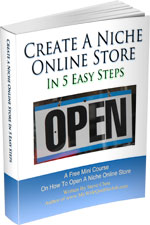
Ready To Get Serious About Starting An Online Business?
If you are really considering starting your own online business, then you have to check out my free mini course on How To Create A Niche Online Store In 5 Easy Steps.
In this 6 day mini course, I reveal the steps that my wife and I took to earn 100 thousand dollars in the span of just a year. Best of all, it's absolutely free!

